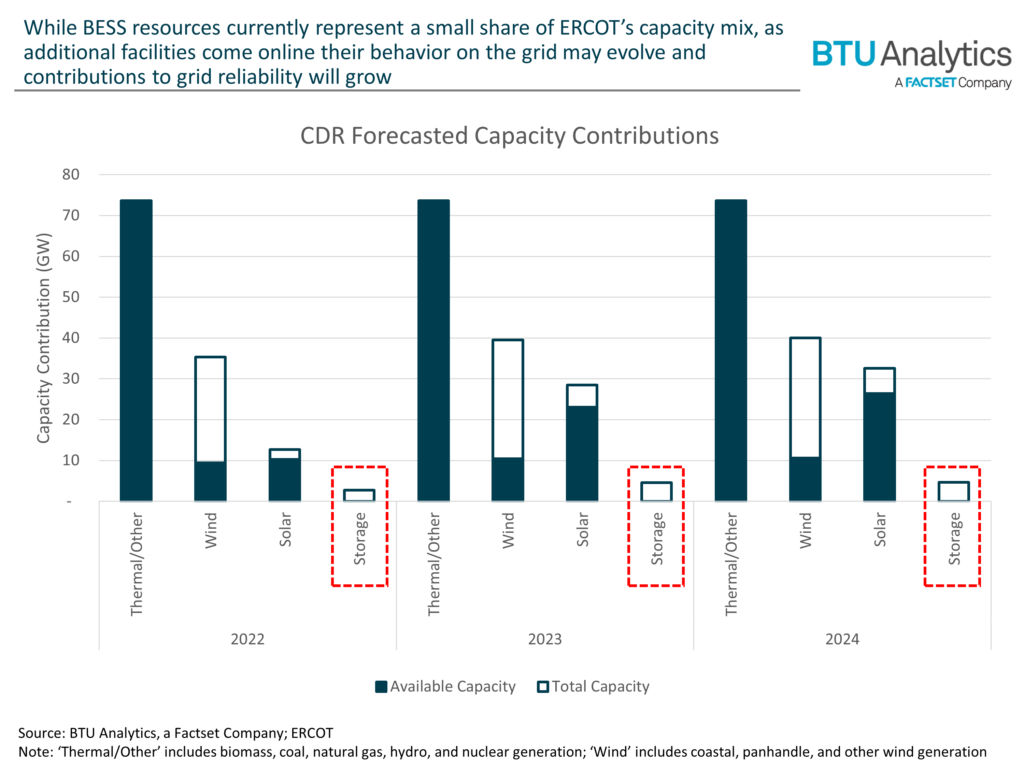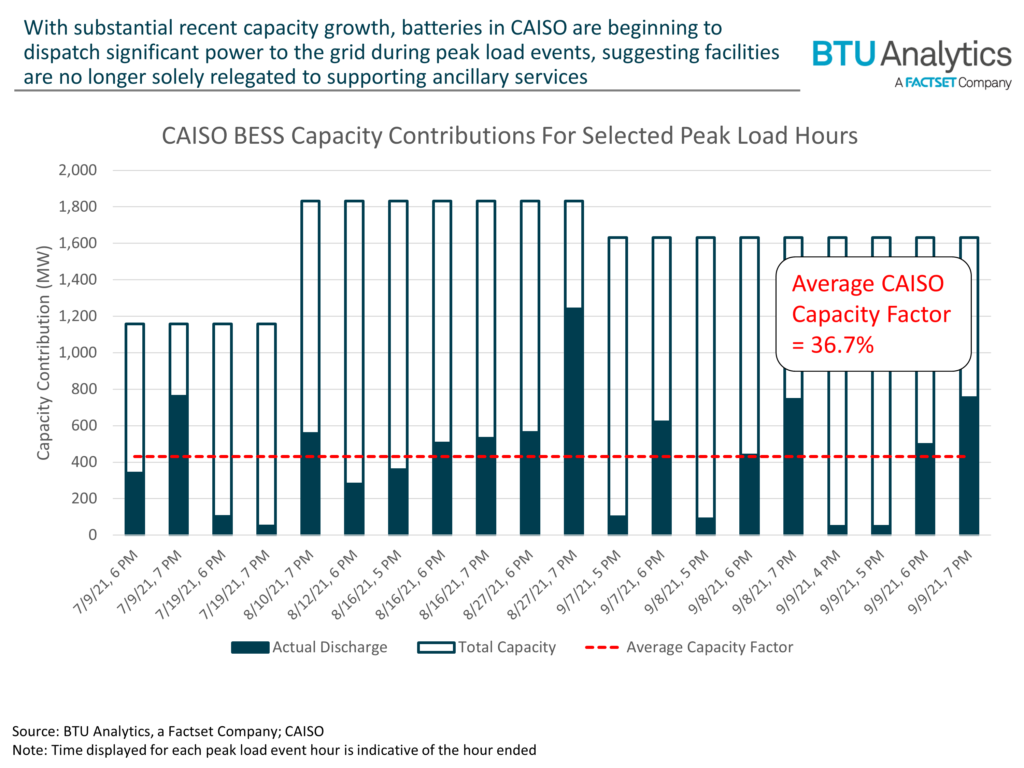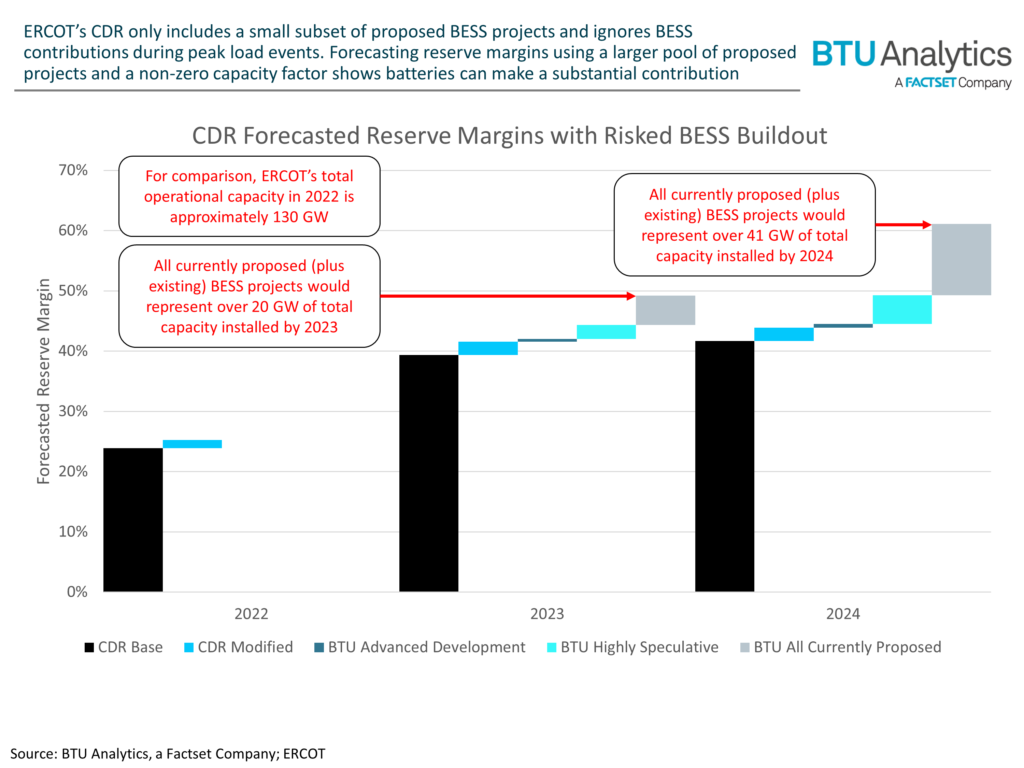While the Electric Reliability Council of Texas (ERCOT)’s grid stands apart from other Independent System Operators (ISOs) in the United States for its energy-only wholesale electricity market, it’s still subject to similar requirements to maintain adequate reserve margins to support the reliability of the grid. As a percentage of total system capacity, ERCOT has more solar and wind capacity than even CAISO, which presents a need for managing an influx of intermittent generation. As additional renewable resources are added to the stack, battery energy storage systems (BESS) are being deployed in increasing number and capacity. Today’s Energy Market Insight will review implications to reserve margins due to the ongoing battery buildout in ERCOT.
Reserve margin, measured as a percentage, is defined as the excess of available generating resources over peak load and is an important yardstick for evaluating the ability of the grid to serve expected demand. For many areas, especially across the deserts of the southwestern United States, this measure is typically most relevant during the hot afternoon and evening hours of mid-summer months, when higher temperatures translate into air conditioning loads in many populous US cities. To communicate this vital metric to stakeholders, ERCOT produces a semiannual assessment of forecasted capacity, demand, and reserves within the ERCOT system, called the CDR Report.
Thermal resources maintain a very high level of availability in the CDR’s capacity assessment. Capacity factors for wind and solar resources, due to their intermittency, rely on average historical measures of contributions from prior peak load events. While significant increases in solar capacity steal the CDR limelight from 2022 to 2024, a recent newcomer to the ERCOT generation mix, battery energy storage systems, have begun to represent an increased share. Interestingly, as shown in the chart above, CDR reserve margin calculations don’t currently acknowledge any contribution from this new and growing resource to meet peak load on the grid.
As BTU Analytics examined previously in CAISO, as installed capacity increases, the role BESS plays on the grid begins to evolve from that of providing ancillary services to providing dispatchable power and peaking capacity. Work within ERCOT continues in revising models to predict the role BESS is expected to play on the future grid, but with BESS deployments only a few years behind CAISO, might we develop some insight from CAISO to predict behaviors in ERCOT?

There are many factors that play a role in battery dispatch to the grid, including transmission congestion, locational marginal pricing, existing obligations for providing ancillary services, and the economics of co-located thermal or renewable resources; however, by examining the aggregate capacity contributions of BESS resources across a selection of the most recent hourly peak load events in CAISO, an average capacity contribution percentage may be derived. Extending this capacity factor to forecasted resources in ERCOT may provide insight into how reserve margins may change after a BESS buildout.

As mentioned, the latest CDR doesn’t provide any capacity factor for batteries to dispatch to the grid during peak load events, so the ‘CDR Base’ case effectively reports the reserve margin without any BESS contributions. The ‘CDR Modified’ case shows the projected effect on reserve margins assuming the same level of project development in the CDR but with CAISO’s BESS capacity factor applied. The other cases consider deployments of BTU’s risked tranches of proposed projects with their corresponding effects on reserve margins, also using CAISO’s capacity factor. It’s unlikely that all of these proposed projects ultimately make it to market, however this exercise is illustrative of how BESS resources may bring meaningful changes to reserve margins once deployed.
While effects from storage are expected to be material as BESS buildout continues, these facilities only make up a portion of the calculated systemwide reserve margin. How do the CDR reserve margin forecasts measure up to operational experiences on the ground when the grid is challenged by congestion, project cancellations, and adverse conditions to facility readiness? BTU Analytics explore these questions in future Energy Market Insights.








